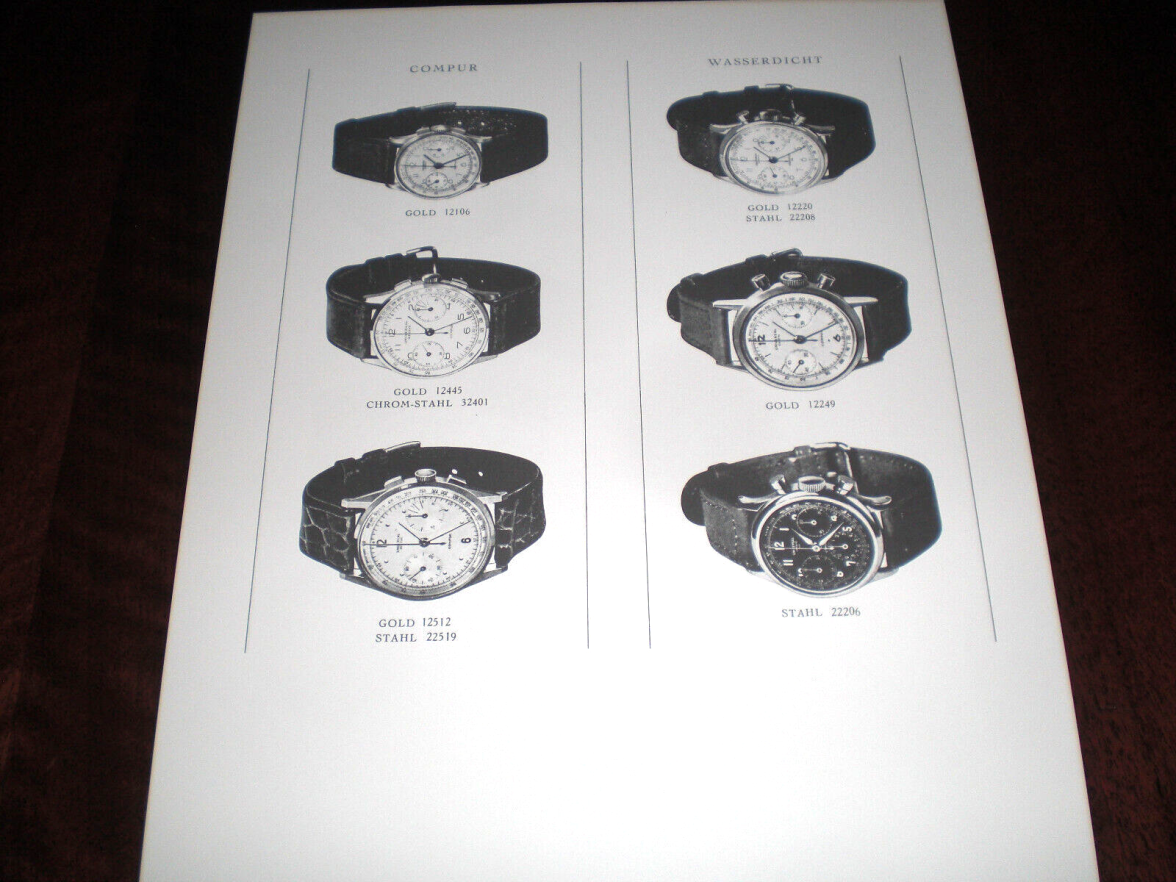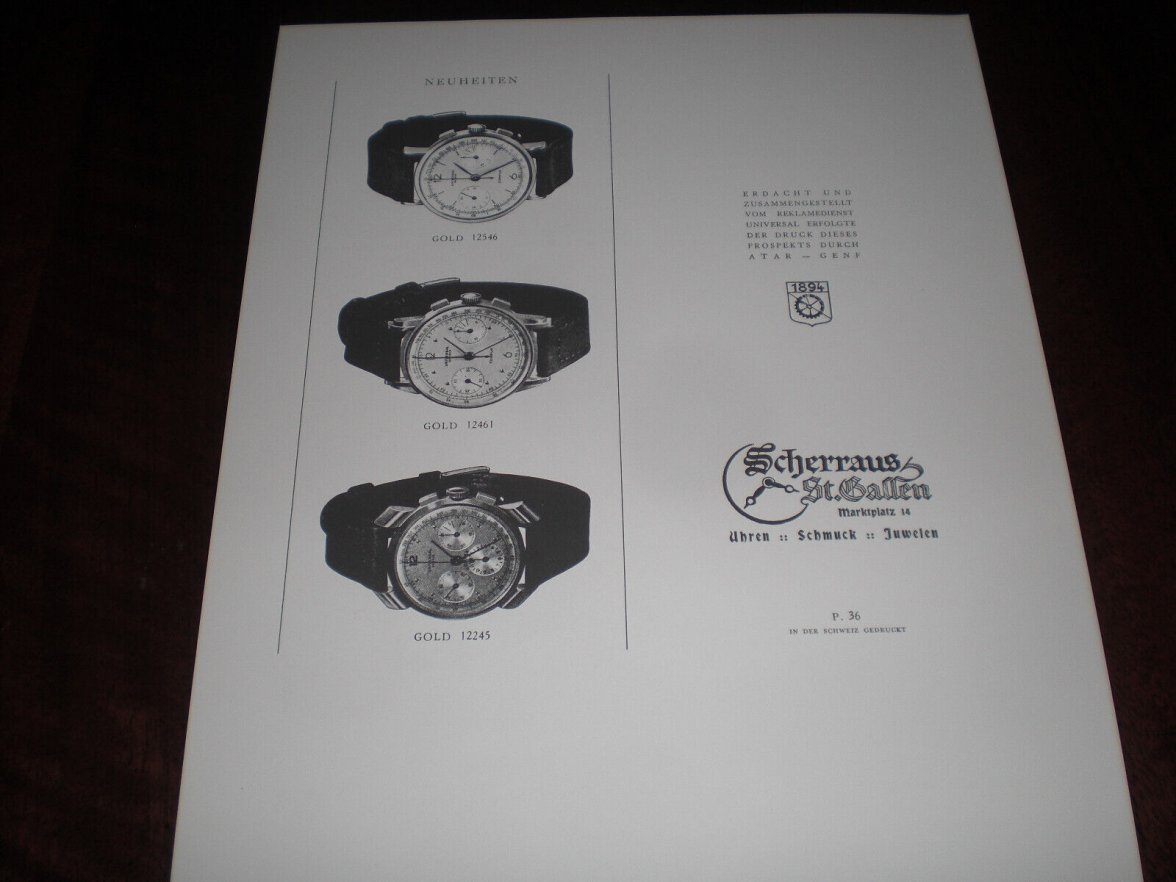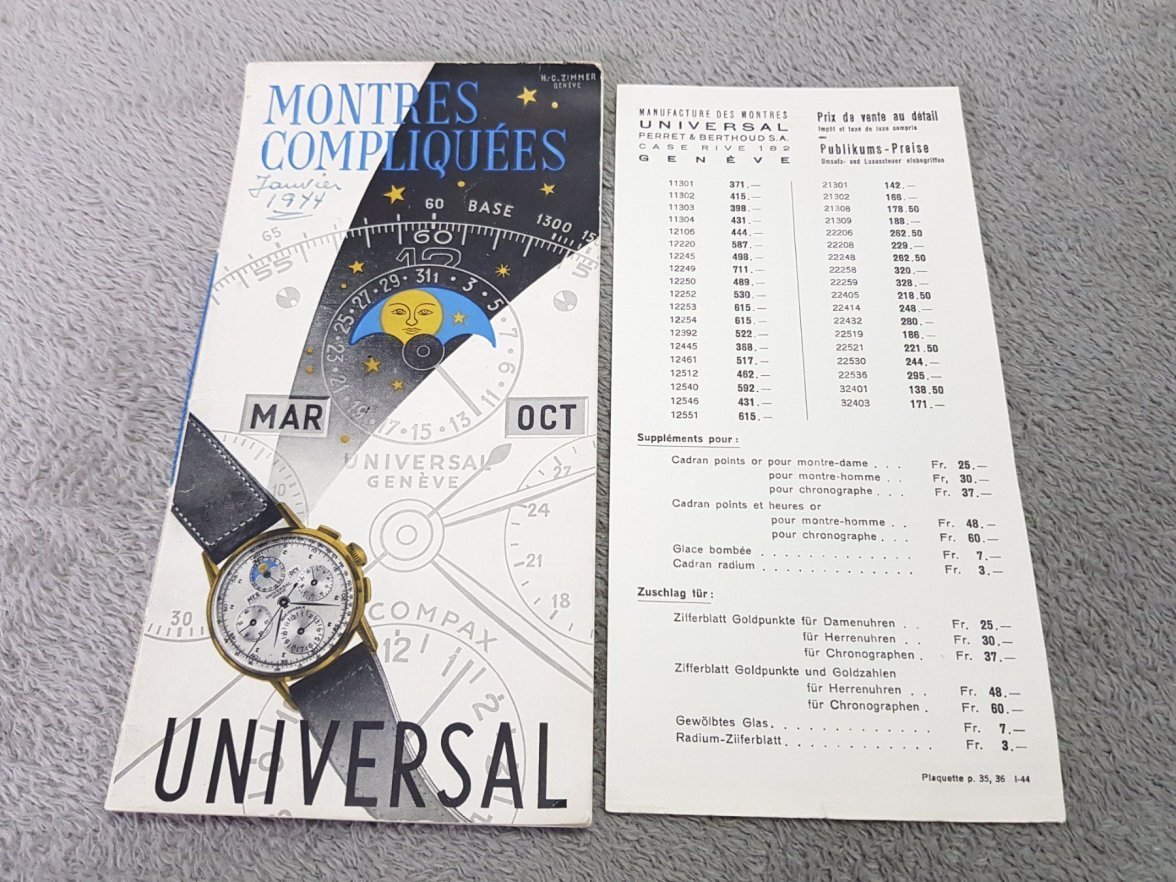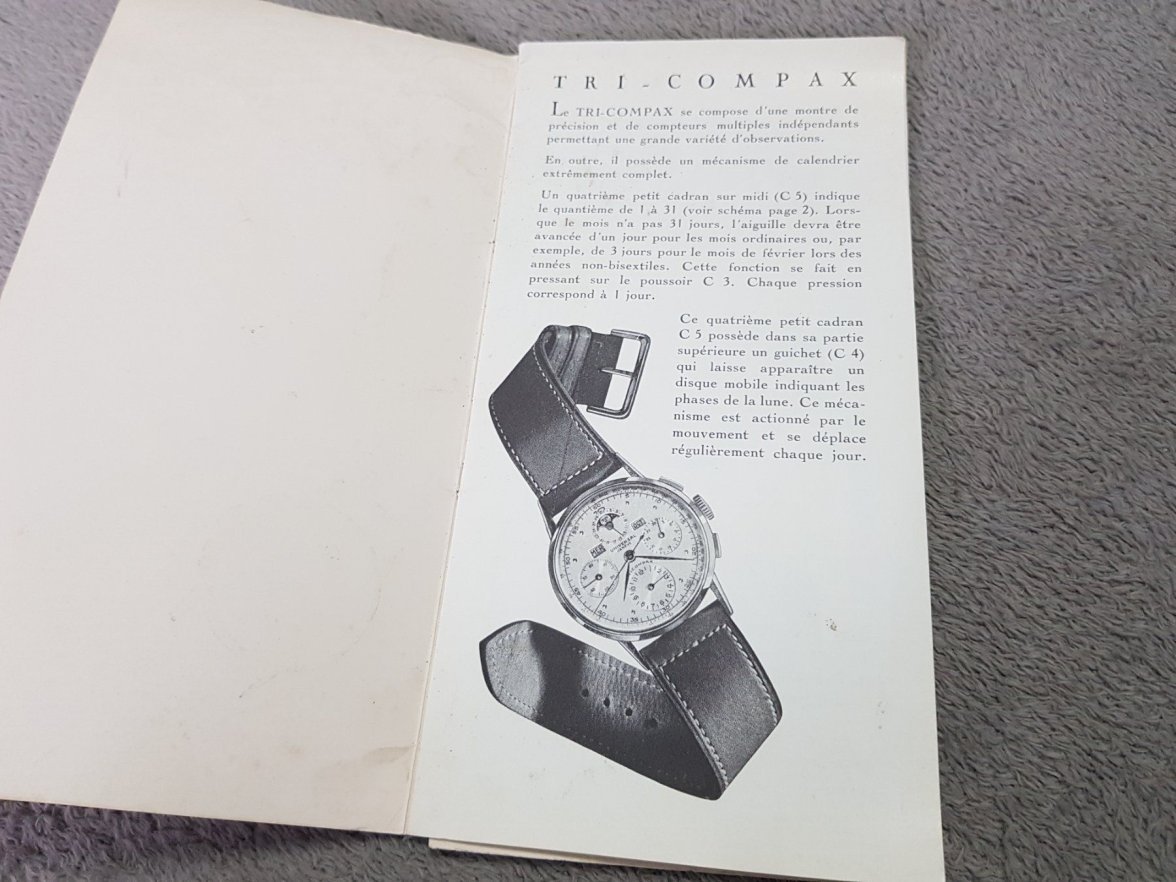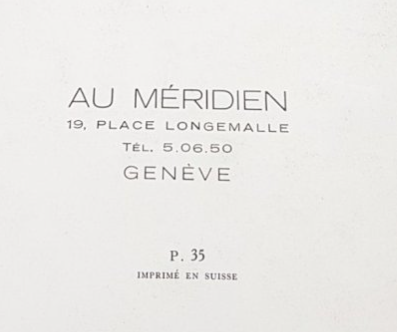Hi OF,
Thought it might be useful to to have a thread for some basic information, documents, or anything else about UG that will benefits this forum and can be easily accessible. I'll start with these ones below.
Best
Andre
Universal Geneve Logos
Serial Numbers
Case Reference Numbers based on Sala
It was only in 1936/37 that the reference number of the case was also punched alongside the serial number, initially inside the caseback then subsequently on the exterior of the case. From 1936/37 to around 1940, case reference numbers were four-digit numbers assigned at random and - by current standards - with no apparent logic. After approximately 1940, these reference numbers became five-digit numbers.
With no official sources to consult for clearer information on how reference numbers were assigned, photo archives of model produced from the early 1940s to the mid 1950s were studied in an attempt to identify an underlying logic. The archive reffered to is the only one of its kind containing images of such vintage timepieces, and is still kept in Universal's Geneva office.
The following logic has thus been outlined.
The
first number indicates the material used to make the case.
- 1 = 18 carat gold case
- 2 = steel case
- 3 = chrome-plated case
- 4 = gilded case
- 5 = 14 carat gold case
- 6 = no examples of reference numbers starting with the number 6 has been found, or any sources attesting to any such existence
- 7 = 14 carat white gold case
The
second number indicates the type of movement,
- 1 = time only
- 2 = chronograph
The
third number indicates the size of the base plate housing the movement in relation to the calibre used.
- 1 if the case housed a calibre 289 (23.3mm)
- 2 or 3 if the case housed a calibre 281 (27.8mm) or a 283 (29.5mm) or 481 (31.7mm) derivative
- 4 or 5 if the case housed a calibre 285 (31.7mm) or a 287 (33.2mm) or 292 (35.2mm) derivative
This logic applies to chronographs; in calendar watches, the third number is always a 3 as the only calibre mounted in these watches is the calibre 291.
The
last two numbers indicates the case design; 99 numbers were available to define the visual aspect of a case. In order to aid understanding of this numeration system, let us look at a few examples: a model with reference number 52408 has a 14 carat gold case and is a calibre 285 (or derivative) chronograph. On the other hand, if an example bears the number 22305, this tells us that it has a steel case and is a calibre 281 (or derivative) chronograph.
An additional number tacked on to the end, either directly or separated by a space or a hyphen, signals that the case model was a variation of the five-digit model.












